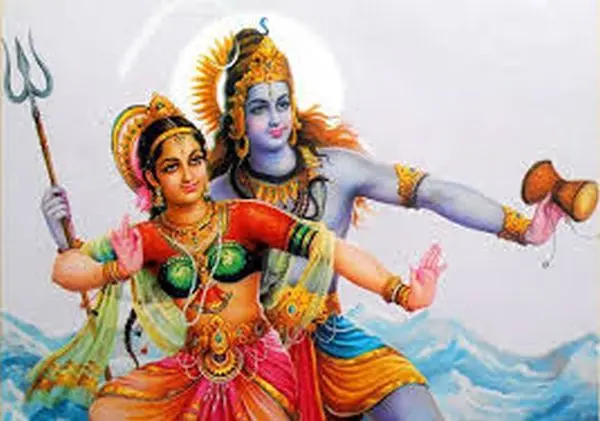Shivratri, one of the most revered Hindu festivals, has been celebrated in Kashmir for centuries with deep devotion and elaborate rituals. Historical texts, such as the Nilamata Purana (6th century AD), mention Shivratri as a significant Kashmiri festival, while the Krama system of Kashmir Shaivism (3rd century AD) also acknowledged its spiritual importance.
Observed on the 14th day of the dark half of the lunar month (Chaturdashi), Shivratri marks the moment when the duality of subject and object dissolves into a singular reality—Shiva. This night, devoid of the sun and moon’s visibility, represents the merging of individual consciousness with the infinite. The 9th-century Kashmiri Shaivite master Acharya Utpaladeva eloquently described this in Shivastotravali:
“When the sun, moon, and stars all set, there arises the radiant Night of Shiva, spreading a splendor of its own.”
Here, the sun and moon symbolize prana (inhalation) and apana (exhalation), while the stars represent thoughts. The complete stillness of these forces leads to the realization of Shiva within.
Shiva: The Infinite Consciousness
Shiva is not just a deity but the very essence of existence—Prakasha (pure light) and Vimarsha (self-awareness). He is:
Infinite and formless, beyond time and space.
The union of Shiva and Shakti, known as Ardhanarishvara.
The remover of darkness, bringing liberation (moksha) to devotees.
The goal of Shiva worship, emphasized by Indian philosophers for millennia, is to experience this supreme consciousness, leading to happiness in both this life and beyond.
Maha Shivratri: The Night of Bhairava
In Tantric traditions, Maha Shivratri is called Bhairavotsava, a night dedicated to Bhairava and his Shakti, Bhairavi. The word “Bhairava” signifies the Supreme Reality that dissolves ego and illusion (maya). The three syllables of Bhairava—Bha, Ra, Va—represent:
Bha: Creation (Srishti)
Ra: Preservation (Sthiti)
Va: Dissolution (Samhara)
Bhairavi, his cosmic energy, is inseparable from Bhairava. Many Tantric scriptures are structured as dialogues between Bhairava and Bhairavi, emphasizing their unity.
Symbolism of Shivratri
Shivratri is a time of deep spiritual reflection. The word Ratri means “night,” but etymologically, Ra signifies “giving,” and Tri means “protection.” Thus, Shivratri is the night that bestows divine grace and shields devotees from ignorance.
According to the Skanda Purana, Shivratri is the highest of all nights. It is believed that sincere worship on this night ensures liberation from the cycle of birth and death. Shri Madhavacharya, the author of Kalamadhava, affirmed that fasting and meditating on this night invite Shiva’s blessings.
Shivratri in Kashmiri Tradition: The “Herath” Festival
In Kashmir, Shivratri is known as Herath, derived from Hara Ratri (Night of Hara, another name for Shiva). An interesting historical anecdote dates back to the Afghan rule in Kashmir, when Governor Abdul Jabbar forced Kashmiri Pandits to observe Shivratri in June instead of February. Despite this unnatural timing, it is said that snowfall occurred—an event so astonishing that the ruler exclaimed, “Hai-rut!” (astonishment). This phrase evolved into Herath, the local name for Shivratri.
Twenty-Five Days of Celebration
Kashmiri Pandits traditionally celebrate Shivratri over twenty-five days, with five days of intense rituals:
1. Ekadashi (Haur Eakdhou): Cleansing of homes and preparation for rituals.
2. Dwadashi (Vagur Bahh): Setting up sacred earthen vessels for Vatuk Bhairava and other deities.
3. Trayodashi (Haur Truvah): Worship of Vatuk Bhairava, Shiva’s youthful form.
4. Chaturdashi (Shiv Chaturdashi): Main day of worship, fasting, and night-long vigil.
5. Amavasya (Doon Mavas): Culmination of the festival with prayers for peace and prosperity.
Elaborate Rituals and Offerings
Shivratri rituals in Kashmiri households involve:
Vatuk Bhairava Puja: Worship of Bhairava along with his eight energies (Soumya, Bhima, Riddhi, etc.).
Panak Offering: A sacred herbal beverage prepared using 21 different herbs.
Kalash Puja: Water-filled earthen pots symbolizing Shiva’s divine presence.
Sri Chakra Worship: Tantric rituals invoking Tripura Sundari, the supreme goddess.
Kshetrapal Worship: Honoring nine forms of Bhairava, protectors of Kashmir’s sacred sites.
In some households, a special clay model called Vagur is worshipped, symbolizing the divine net that binds and liberates souls. This represents the Anahata Chakra (heart center) in Kundalini Yoga.
Shivratri Prasad and Community Gatherings
The festival culminates with the distribution of prasad, particularly soaked walnuts, which are considered Shiva’s prasad in Kashmiri tradition. Community gatherings at temples such as Chakreshwar Temple (Hari Parbat) and Ragyna Devi Temple feature night-long bhajans and prayers.
The Spiritual Significance of Kashmiri Shivratri
Shivratri in Kashmir is not just a night of worship—it is a profound spiritual journey. The festival emphasizes:
Cleansing of the self (Haur Eakdhou symbolizes both physical and spiritual purification).
Control of the senses (Gaad Kah teaches discipline over sensory desires).
Devotion to the divine (Vatuk Bhairava Puja fosters connection with Shiva’s energies).
Attaining higher consciousness (Ratri signifies the absorption into Shiva’s infinite bliss).


